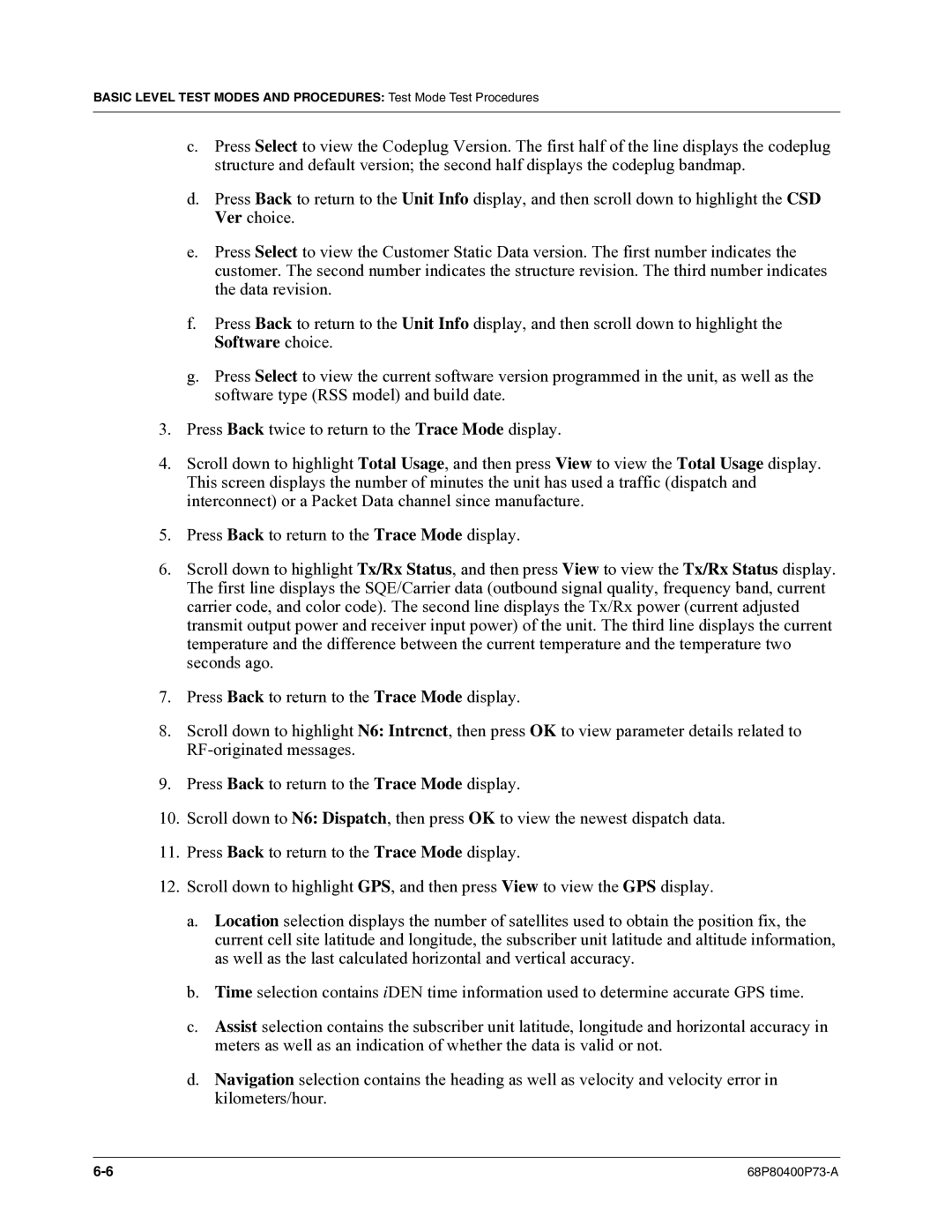
BASIC LEVEL TEST MODES AND PROCEDURES: Test Mode Test Procedures
c.Press Select to view the Codeplug Version. The first half of the line displays the codeplug structure and default version; the second half displays the codeplug bandmap.
d.Press Back to return to the Unit Info display, and then scroll down to highlight the CSD Ver choice.
e.Press Select to view the Customer Static Data version. The first number indicates the customer. The second number indicates the structure revision. The third number indicates the data revision.
f.Press Back to return to the Unit Info display, and then scroll down to highlight the
Software choice.
g.Press Select to view the current software version programmed in the unit, as well as the software type (RSS model) and build date.
3.Press Back twice to return to the Trace Mode display.
4.Scroll down to highlight Total Usage, and then press View to view the Total Usage display. This screen displays the number of minutes the unit has used a traffic (dispatch and interconnect) or a Packet Data channel since manufacture.
5.Press Back to return to the Trace Mode display.
6.Scroll down to highlight Tx/Rx Status, and then press View to view the Tx/Rx Status display. The first line displays the SQE/Carrier data (outbound signal quality, frequency band, current carrier code, and color code). The second line displays the Tx/Rx power (current adjusted transmit output power and receiver input power) of the unit. The third line displays the current temperature and the difference between the current temperature and the temperature two seconds ago.
7.Press Back to return to the Trace Mode display.
8.Scroll down to highlight N6: Intrcnct, then press OK to view parameter details related to
9.Press Back to return to the Trace Mode display.
10.Scroll down to N6: Dispatch, then press OK to view the newest dispatch data.
11.Press Back to return to the Trace Mode display.
12.Scroll down to highlight GPS, and then press View to view the GPS display.
a.Location selection displays the number of satellites used to obtain the position fix, the current cell site latitude and longitude, the subscriber unit latitude and altitude information, as well as the last calculated horizontal and vertical accuracy.
b.Time selection contains iDEN time information used to determine accurate GPS time.
c.Assist selection contains the subscriber unit latitude, longitude and horizontal accuracy in meters as well as an indication of whether the data is valid or not.
d.Navigation selection contains the heading as well as velocity and velocity error in kilometers/hour.
